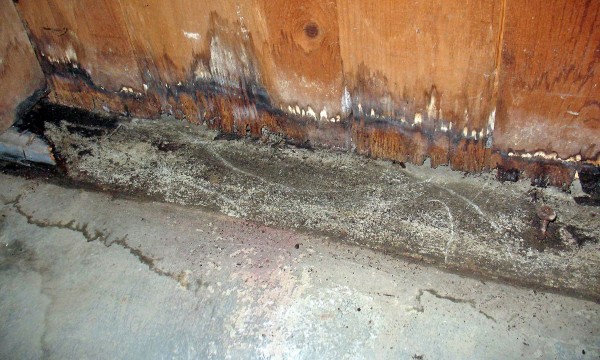Damp can come from many sources — from the roof, through chimneys, through walls, around openings or rise up from the ground. Dampness can result in deterioration of finishes, damage to plaster, mold growths, rotting timbers and a cold, unhealthy house in winter. You may be lucky enough to be in an area where heavy rain is uncommon, and repairs may not be an urgent necessity, but water problems must be dealt with eventually.
- Browse Categories
- All Tips
-
Home & Garden
- All
- Appliances
- Bathroom
- Cleaning
- Crafts
- Decorating
- Electrical
- Flooring
- Furniture
- Garage Door
- Gardening
- Green Living
- Heating
- Home Alarm Systems
- Home Maintenance
- Home Remedies
- Home Security
- Home Staging
- House Sitting
- Junk Removal
- Kitchen
- Lawn Care
- Lock Systems
- Moving
- Outdoor Living
- Pest Control
- Plumbing
- Renovation
- Roofing
- Snow Removal
- Storage
- Tools
- Tree Service
- Health
- Family
- Travel
- Auto
- More Tips

How to deal with 4 common types of water damage
July 29, 2015

What clay soil does to your house
For a while, evaporation from the wall can deal with the moisture coming from the ground, but the problem will gradually worsen and become more obvious inside the house. In some regions, high salt levels in the soil make the problem worse. This so-called salt damp is very destructive to building materials, and the soil from which the salt comes is often unstable. Seek professional advice.
- Damp courses in some old buildings may now be ineffective. This is because the materials used in the past, such as slate, lead and bitumen products, have broken down.
- Modern damp-course materials are plastic, lead, bitumen-coated aluminium and copper. Plastic should be used if an old course has to be replaced, as this is far more resistant to salt than are metal damp courses.
- The old-fashioned way to replace a damp course is to remove a row of bricks and the old damp course, insert a new course and rebrick.
- One modern method involves cutting out a complete horizontal mortar joint, and inserting a new one together with wedges, shims or non-shrink grout to stop the wall from settling. It is labour intensive, very messy and has to be done one small section at a time; it is best carried out by experts.
- Another, simpler method is to treat damp-affected walls with chemicals; this can be done by the householder.
Penetrating damp
Penetrating damp (also called lateral damp) is where moisture enters the house by soaking through the walls.
- Treat porous walls by painting the outside with a high-quality acrylic membrane or clear sealer.
- Alternatively, you could either extend the roof to form verandas or attach battens to the walls and fix timber or fibre-cement cladding to them.
- Occasionally, treatment is limited to the inside surfaces, using waterproofing paints such as water-based, chemically curing epoxies.
Down damp
Down damp is mainly a problem involving the roof area, or places where pipes and chimneys project through the roof. In each case there must be a flashing to waterproof the joint between roof and projection.
- The flashing does not always last long, and may need replacing from time to time.
- Chimneys are normally made of porous brick or stone, and therefore often allow water to move downwards.
- For this reason, a chimney tray is usually installed above or at the roof line.
- Being made of galvanized iron, the trays do not last more than two decades, and damp may start to seep down the chimney, producing wet patches on adjoining walls.
- Replacement of the tray unfortunately entails demolishing the chimney, so a popular solution is to use a high-quality acrylic membrane to waterproof the outside of the chimney.
Other causes of damp
Sometimes the cavity that blocks moisture entering the inner wall of a double-brick house may become blocked. This can happen if debris from a renovation or alteration is allowed to drop into the cavity, where it forms a bridge between outside and inside.
- To fix this problem you will have to take some bricks out of the wall, usually on the outside, and remove the debris.






